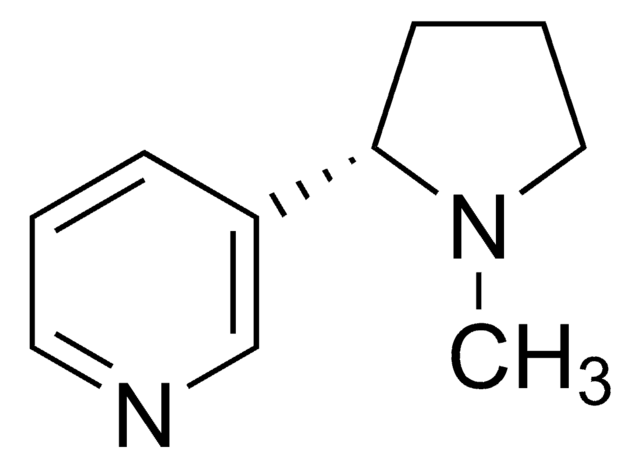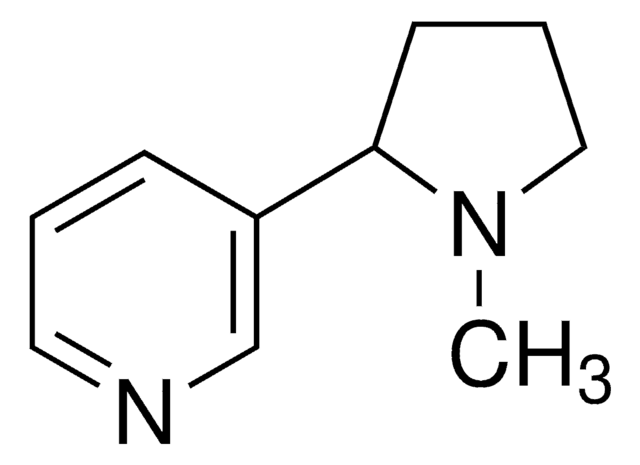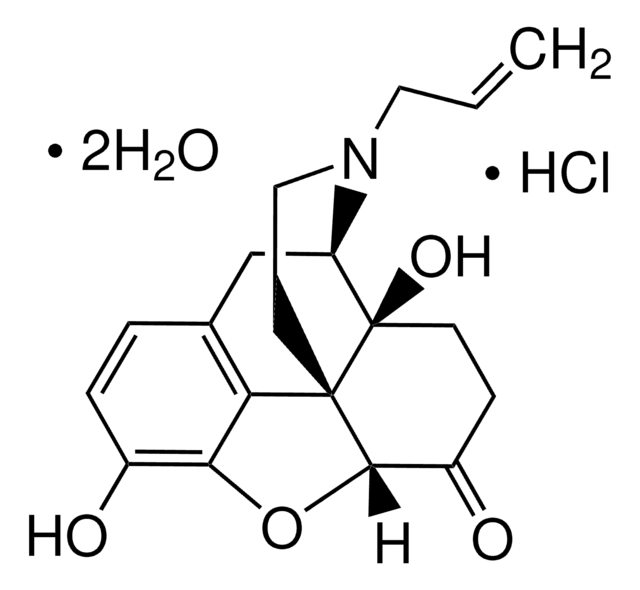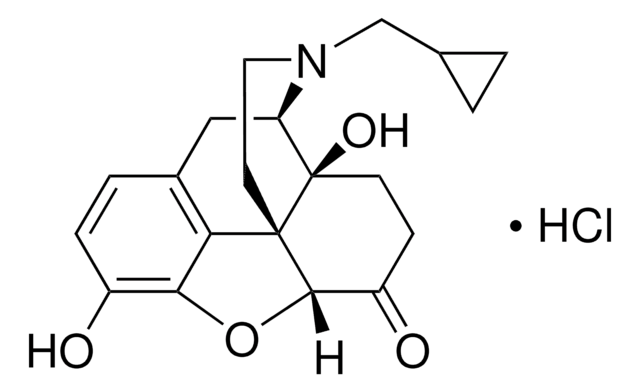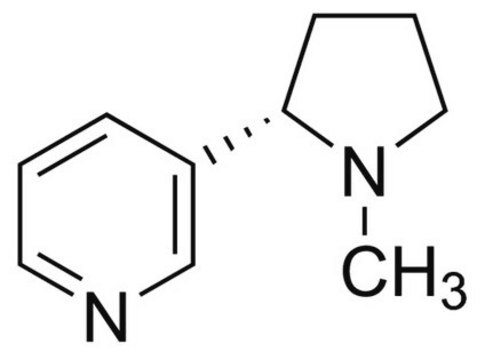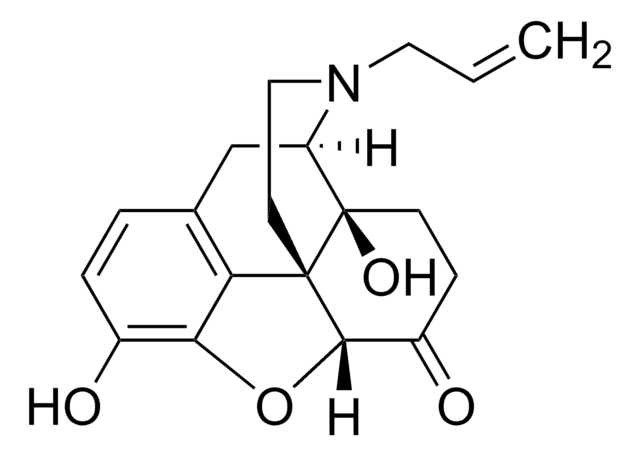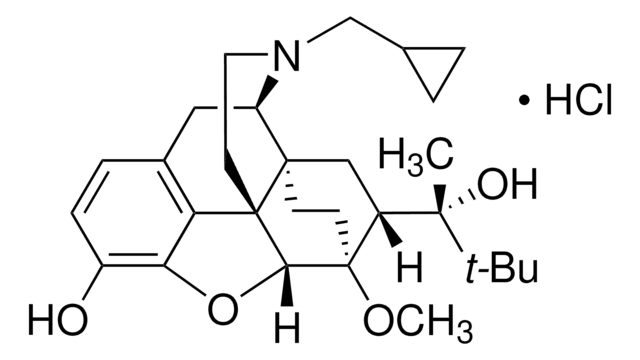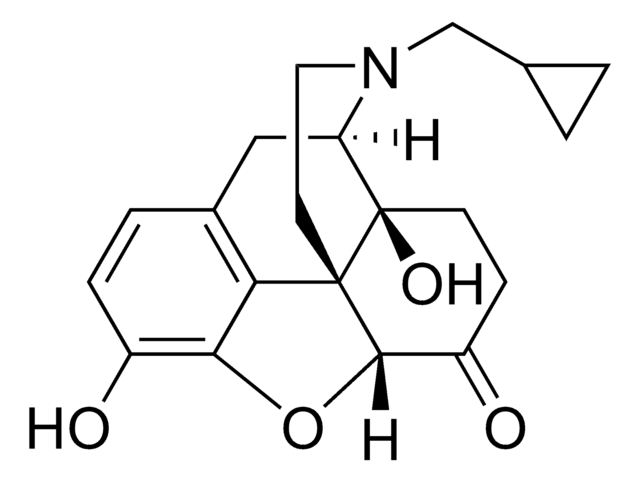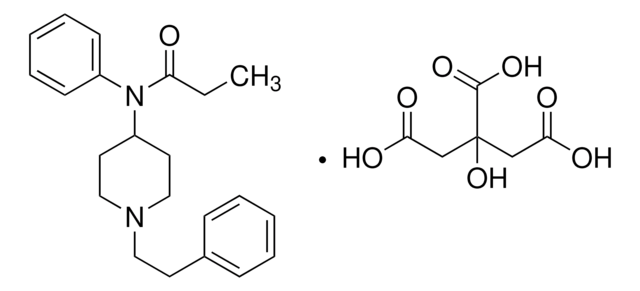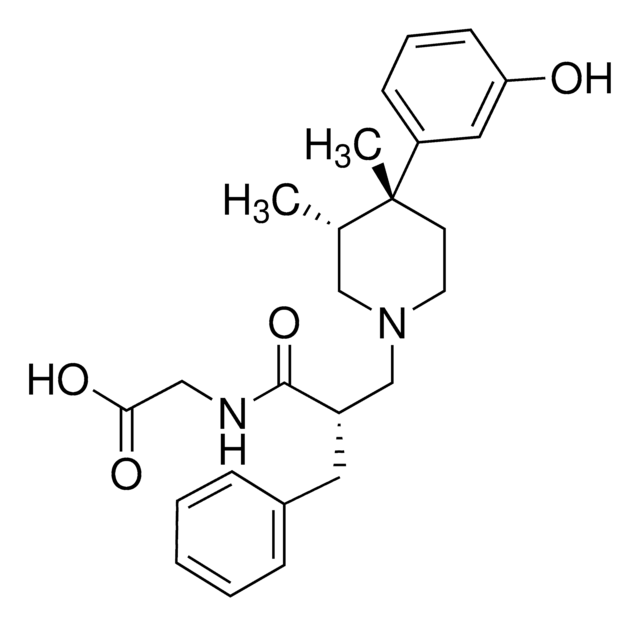N7758
Naloxon -hydrochlorid Dihydrat
≥98% (TLC and titration), powder
About This Item
Empfohlene Produkte
Qualitätsniveau
Assay
≥98% (TLC and titration)
Form
powder
Optische Aktivität
[α]25/D −178.6°, c = 2.5 in H2O(lit.)
Farbe
white to off-white
Löslichkeit
ethanol: 3.3 mg/mL
H2O: 50 mg/mL
Lagertemp.
2-8°C
SMILES String
O.O.Cl.Oc1ccc2C[C@H]3N(CC[C@@]45[C@@H](Oc1c24)C(=O)CC[C@@]35O)CC=C
InChI
1S/C19H21NO4.ClH.2H2O/c1-2-8-20-9-7-18-15-11-3-4-12(21)16(15)24-17(18)13(22)5-6-19(18,23)14(20)10-11;;;/h2-4,14,17,21,23H,1,5-10H2;1H;2*1H2/t14-,17+,18+,19-;;;/m1.../s1
InChIKey
TXMZWEASFRBVKY-IOQDSZRYSA-N
Angaben zum Gen
human ... OPRD1(4985) , OPRK1(4986) , OPRM1(4988) , OPRS1(10280)
Suchen Sie nach ähnlichen Produkten? Aufrufen Leitfaden zum Produktvergleich
Anwendung
- isotonic saline and injected subcutaneously into experimental rats to study its involvement with withdrawal syndrome in morphine-dependent rats
- as opioid receptor antagonist to examine the role of the endogenous opioid system in infantile amnesia for contextual fear
- as a reference neutral antagonist to define the maximum effect (Emax) of the system
Biochem./physiol. Wirkung
Leistungsmerkmale und Vorteile
Vorsicht
Signalwort
Warning
H-Sätze
Gefahreneinstufungen
Eye Irrit. 2 - Skin Irrit. 2 - STOT SE 3
Zielorgane
Respiratory system
Lagerklassenschlüssel
11 - Combustible Solids
WGK
WGK 3
Flammpunkt (°F)
Not applicable
Flammpunkt (°C)
Not applicable
Persönliche Schutzausrüstung
dust mask type N95 (US), Eyeshields, Gloves
Analysenzertifikate (COA)
Suchen Sie nach Analysenzertifikate (COA), indem Sie die Lot-/Chargennummer des Produkts eingeben. Lot- und Chargennummern sind auf dem Produktetikett hinter den Wörtern ‘Lot’ oder ‘Batch’ (Lot oder Charge) zu finden.
Besitzen Sie dieses Produkt bereits?
In der Dokumentenbibliothek finden Sie die Dokumentation zu den Produkten, die Sie kürzlich erworben haben.
Kunden haben sich ebenfalls angesehen
Unser Team von Wissenschaftlern verfügt über Erfahrung in allen Forschungsbereichen einschließlich Life Science, Materialwissenschaften, chemischer Synthese, Chromatographie, Analytik und vielen mehr..
Setzen Sie sich mit dem technischen Dienst in Verbindung.